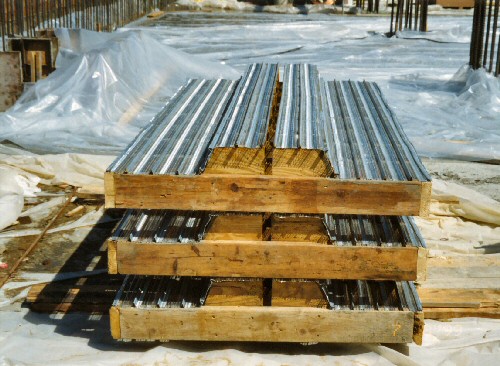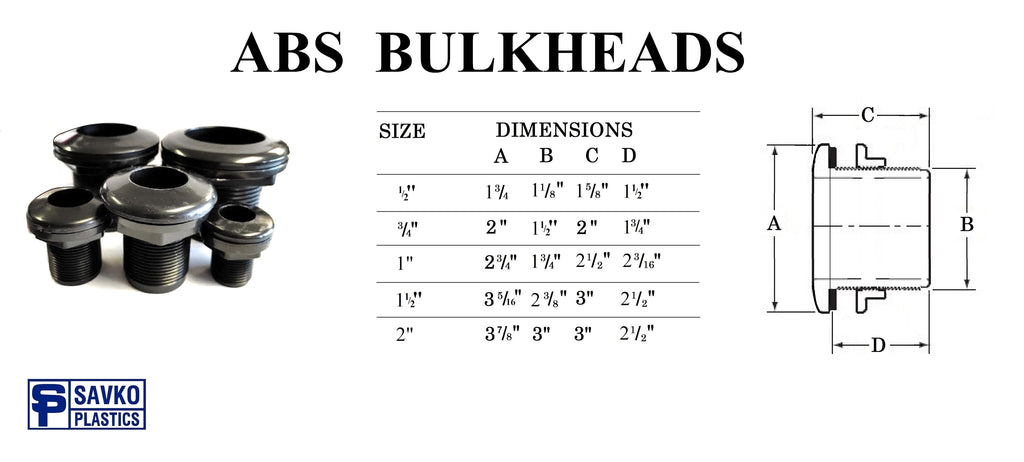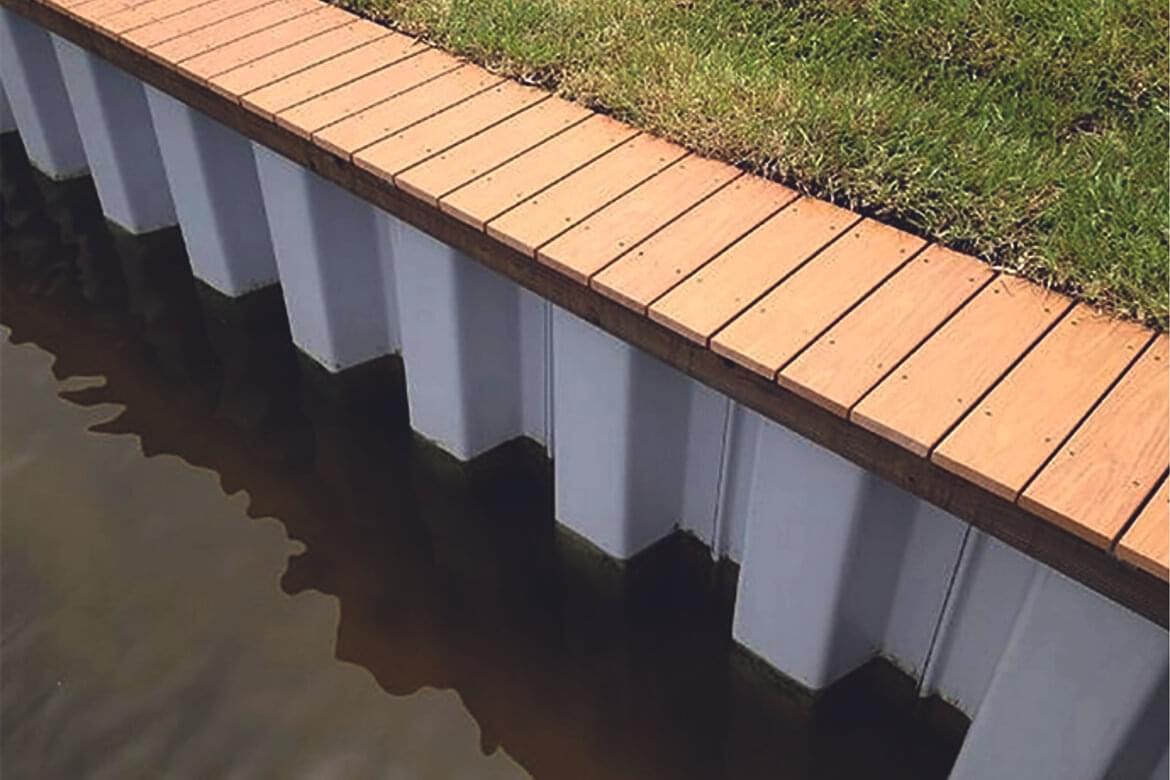Bulkhead on Lake Livingston: A Detailed Guide to Contemporary Building Practices
Wiki Article
Discovering the Various Usages of Bulkhead Frameworks in Modern Architecture
Bulkhead frameworks play a substantial function in contemporary architecture, serving both useful and visual purposes. They can define areas, boost storage remedies, and improve illumination. In industrial settings, they serve as focal points that mirror brand name identification - Bulkhead on Lake Livingston. In addition, their combination commonly sustains audio monitoring and lasting techniques. Recognizing the full range of their applications exposes much about modern layout fads and user experience. What ingenious usages of bulkheads might arise in the future?Specifying Bulkhead Frameworks
Bulkhead structures play a critical duty in modern style, acting as essential elements in numerous structure designs. These frameworks are typically specified as elevated ceilings or systems, typically used to conceal mechanical systems, circuitry, or pipes. Bulkheads can be discovered in both business and household settings, where they give a seamless blend of functionality and looks. Their style can integrate lights components and various other attractive aspects, enhancing the total aesthetic appeal of a space.Typically created from materials such as drywall, steel, or timber, bulkheads can be tailored to fit the architectural design and demands of the building (Bulkhead on Lake Livingston). They offer not only to conceal undesirable framework however likewise to create specified zones within open rooms. By handling the flow of a space, bulkheads add to the spatial organization, making them a significant element of modern architectural technique. Consequently, their definition envelops both aesthetic and functional dimensions
Functional Applications in Residential Style
Bulkhead structures play a crucial role in residential design by promoting space optimization approaches that take full advantage of functional locations. They add visual layout components that improve the aesthetic charm of living rooms. Additionally, these structures provide essential structural assistance solutions, making sure the honesty and safety of the home.Room Optimization Techniques
As contemporary household layouts increasingly prioritize efficient usage of room, cutting-edge techniques arise to take full advantage of functionality without sacrificing looks. One noticeable strategy includes the combination of bulkhead structures, which can delineate locations while offering important storage options. These structures can be utilized to create vertical storage space systems that enhance both company and ease of access. Furthermore, multi-functional furnishings, such as convertible couches and collapsible tables, complements bulkhead layouts, permitting areas to adjust to differing needs. Open layout even more optimize spatial flow, encouraging adaptability in use. Integrating built-in shelving and recessed illumination within bulkheads also adds to a streamlined atmosphere, ensuring that fully of space is used effectively and harmoniously within the overall layout.Aesthetic Layout Aspects

Architectural Assistance Solutions
In modern property style, a reliable architectural assistance solution is essential for keeping the stability of spaces while maximizing design and capability. Bulkhead structures play a substantial duty in this scenario, working as both support and dividing components. They can hide mechanical systems, such as pipes and electrical wiring, while providing reinforcement to the ceiling and flooring systems. By purposefully putting bulkheads, architects can produce defined locations within open layout, improving usability without jeopardizing architectural stability. Additionally, these structures can fit illumination components, adding to both aesthetic appeals and usefulness. To summarize, bulkhead structures are essential in property layout, offering functional assistance options that improve both the performance and visual appeal of living areas.Enhancing Aesthetics in Industrial Spaces
When industrial spaces embrace cutting-edge bulkhead frameworks, they not only specify physical boundaries yet likewise considerably improve the overall visual appeals of the environment. These building aspects serve as aesthetic centerpieces, attracting interest and producing a sense of intrigue. By including varied materials such as metal, glass, or wood, bulkheads can reflect a brand name's identity and mission, adding to a cohesive layout.Additionally, the critical placement of bulkheads can control light and shadow, adding deepness and dimension to or else level rooms. This interaction can change an industrial area right into an inviting atmosphere, urging customer interaction. In addition, using color and structure in bulkhead layout can stimulate certain emotions, boosting the overall consumer experience. Eventually, the thoughtful integration of bulkhead frameworks raises the visual charm of business spaces, making them not only useful however also visually enchanting, therefore fostering a lasting perception on site visitors.
Acoustic Efficiency and Audio Management
Reliable acoustic performance plays an important function in modern-day design, particularly within commercial spaces where sound administration is vital. Bulkhead structures can greatly enhance acoustic qualities by absorbing audio, minimizing echo, and mitigating sound transfer between locations. These functions are especially beneficial in atmospheres such as restaurants, offices, and cinemas, where clear interaction and a pleasant acoustic experience are vital.The tactical placement and layout of bulkheads can aid create sound-buffer areas, efficiently isolating noisy locations from quieter ones. Products utilized in bulkhead building and construction, such as soft finishes and acoustic panels, contribute to their sound-dampening capabilities. Additionally, the incorporation of bulkheads enables the combination of sound-absorbing components without jeopardizing aesthetic charm. By dealing with site here acoustic performance, designers can create unified settings that improve comfort, enhance customer experience, and promote efficiency, making bulkheads a crucial element in the design of contemporary commercial areas.
Integrating Bulkheads for Reliable Area Application
Usually ignored, the integration of bulkheads in architectural design can substantially improve area use in contemporary structures. These structural components offer multiple functional purposes, using a way to hide mechanical systems, electric circuitry, and plumbing without jeopardizing appearances. By tactically placing bulkheads, designers can produce specified areas within open layout, thus promoting better organization and flow.Furthermore, bulkheads can incorporate storage space options and lighting functions, making the most of the capability of otherwise wasted upright space. In domestic settings, they might delineate zones such as cooking areas or living locations, while in industrial areas, they can boost the efficiency of layouts by clearly noting paths and job locations.
Eventually, the thoughtful integration of bulkheads adds to an extra well organized and aesthetically i thought about this enticing atmosphere, permitting adaptable spaces that can develop with the needs of their occupants. This strategy not just optimizes area however likewise fosters an extra harmonious communication in between type and feature.
Bulkheads in Public Architecture

Architectural Aesthetic Enhancements
While many architectural aspects aim for performance, bulkheads in public style offer a dual objective by boosting visual charm. These frameworks usually produce aesthetic passion with their style, integrating flawlessly with surrounding elements. By utilizing numerous materials, structures, and colors, bulkheads can add to an unique identification for public areas, such as airports, galleries, and collections. Their tactical positioning assists to delineate locations, guiding site visitors while adding deepness to the overall layout. Furthermore, bulkheads can accentuate lights, developing dynamic environments that alter throughout the day. This aesthetic enhancement not just raises the site visitor experience but also fosters a feeling of place, making bulkheads an important consideration in contemporary public architecture. Overall, bulkheads embody the combination of form and function.
Structural Assistance Solutions
As engineers look for cutting-edge means to improve the architectural honesty of public rooms, bulkheads become vital components in the design and building process. These structures provide essential assistance, particularly in areas subject to hefty foot traffic or dynamic loads. By dispersing weight uniformly, bulkheads help avoid structural failure while permitting versatile style choices. In huge places, such as arenas and convention facilities, bulkheads are usually incorporated right into the general architectural structure, making sure stability and security. Furthermore, they can assist in the consolidation of utilities and mechanical systems, adding to the effectiveness of room usage. Eventually, bulkheads stand for a critical option in contemporary public style, reinforcing both functionality and safety and security in community-focused settings.Environmental Management Actions
Including environmental management steps right into public design has actually ended up being progressively important as city designers prioritize sustainability together with architectural assistance. Bulkhead structures offer a dual objective hereof, serving as barriers versus erosion and flooding while simultaneously boosting the aesthetic charm of city landscapes. Their layout often includes natural components such as plants, which can enhance air quality and give habitats for wildlife. Furthermore, bulkheads can be engineered with permeable products that enable water absorption, lowering drainage and promoting groundwater recharge. This integration of ecological considerations not only preserves the atmosphere but also promotes area durability against climate modification. By using bulkheads effectively, designers add to sustainable city advancement that aligns with contemporary ecological objectives.Future Fads in Bulkhead Layout
Emerging fads in bulkhead style show a growing focus on sustainability, technology, and functionality in contemporary design. Designers are significantly incorporating environmentally friendly materials, such as recycled composites and bioplastics, to lower environmental impact. On top of that, the integration of smart innovation is becoming prevalent, making it possible for bulkheads to offer multi-functional purposes, consisting of energy storage space and climate control.
In city settings, modular bulkhead systems are obtaining traction, supplying flexibility in design and simplicity of installment. These systems can be adjusted to numerous landscapes, enabling efficient room utilization. Additionally, aesthetic considerations are progressing; bulkheads are now being developed to improve aesthetic allure, commonly including imaginative elements that reverberate with regional culture.
As environment strength comes to be a top priority, future bulkhead layouts will likely prioritize flooding defense and stormwater management, ensuring structural honesty while attending to ecological difficulties. This change indicates a holistic approach to architecture that fulfills both environmental responsibilities and human needs.
Frequently Asked Questions
What Materials Are Typically Used for Bulkhead Building?
Usual materials for bulkhead building consist of concrete, steel, hardwood, and composite products. These choices provide resilience, architectural honesty, and resistance to environmental elements, making them appropriate for different applications in building and construction and engineering projects.How Do Bulkheads Impact Structure Power Performance?
Bulkheads boost constructing power efficiency by providing thermal insulation and decreasing air leak (Bulkhead on Lake Livingston). They aid maintain indoor temperatures, thus decreasing home heating and cooling demands, ultimately leading to lower energy expenses and enhanced ecological sustainabilityAre There Any Type Of Building Regulations Details to Bulkhead Structures?
Yes, constructing codes certain to bulkhead structures exist, differing by location. These guidelines generally attend to safety and security, structural honesty, and availability, ensuring that bulkheads fulfill needed criteria for building and construction and layout within a provided jurisdiction.Can Bulkheads Be Easily Modified or Removed Later?
Bulkheads can often be changed or removed, depending important source on their design and building. Nevertheless, such modifications might call for cautious preparation and adherence to building regulations to guarantee architectural stability and safety and security are kept throughout the procedure.What Are the Costs Related To Installing Bulkhead Frameworks?
The expenses associated with installing bulkhead structures can vary significantly, commonly influenced by materials, design complexity, and labor. Generally, expenses range from modest to high, depending on the job's specific demands and area.Bulkhead structures play a crucial function in contemporary architecture, serving as important parts in numerous building layouts. Bulkhead frameworks play a necessary function in domestic layout by promoting space optimization approaches that take full advantage of useful areas. Usually neglected, the assimilation of bulkheads in building style can substantially enhance room application in modern-day structures. As architects look for innovative methods to enhance the structural integrity of public spaces, bulkheads arise as crucial parts in the design and building process. The expenses linked with installing bulkhead structures can vary substantially, normally affected by products, layout intricacy, and labor.
Report this wiki page